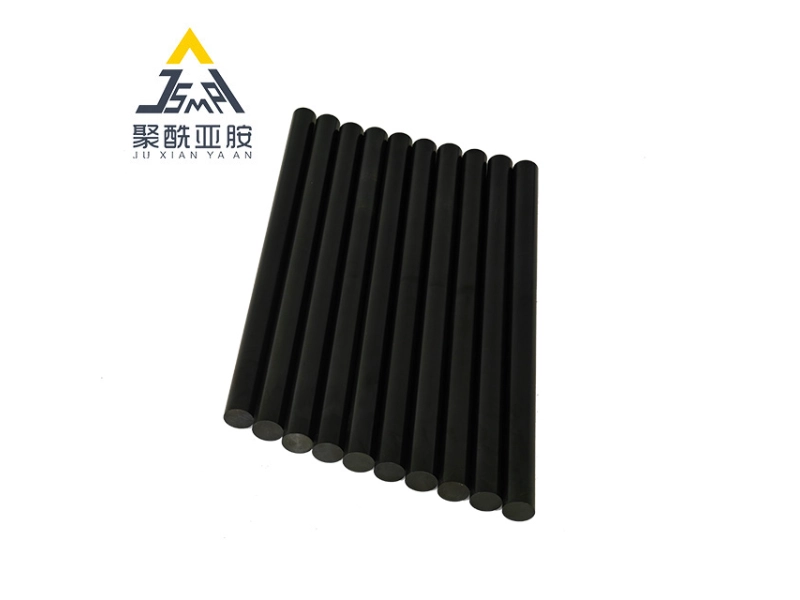Over the past few years, the resources used in high-performance applications have undergone a remarkable transformation. One particular material that has arisen as a revolutionary solution is conductive polyimide resin rods. Known for their noteworthy thermal stability and outstanding electrical conductivity, these rods are transforming industries that demand reliability and performance. From innovative manufacturing to high-tech electronics, conductive polyimide resin rods are becoming essential components in modern technology.
Particularly in the aerospace industry, where efficiency and safety are critical, the adoption of superior polyimide rods is rapidly gaining traction. These rods provide the necessary robustness and reduced weight properties that are essential for aerospace applications, enabling the design of more efficient and durable aircraft components. As the need for advanced materials continues to increase, conductive polyimide resin rods stand at the leading edge, offering exceptional advantages that help engineers expand the limits of what is feasible in aerospace design and beyond.
Introduction of Conductive Materials
Conductive resins have emerged as a critical material in numerous high-performance applications, particularly in industries that demand superior thermal and electrical properties. These resins are produced through the polymerization of polyimide precursors, resulting in a durable material that not only shows substantial flexibility but also superb chemical resistance. Their special characteristics permit them ideal for applications in environments where traditional materials may struggle.
In the aerospace industry, conductive polyimide rods are crucial due to their ability to endure extreme temperatures while offering electrical conductivity. Such attributes are essential for components that require consistent performance in the face of thermal stress and fluctuating environmental conditions. The lightweight nature of polyimide resins contributes to the overall performance of aircraft and spacecraft, making them a preferred choice for manufacturers focused on enhancing performance while lowering weight.
In addition, the adaptability of conductive polyimide resins allows for customization to meet particular operational requirements. By altering the composition and processing conditions, manufacturers can adapt these materials for specialized uses, ensuring optimal performance in fields ranging from electronics to automotive and medical devices. As sectors continue to innovate, the appetite for high-performance polyimide rods is predicted to grow, driving developments in material science and engineering.
Uses in the Aerospace Sector
Electrically conductive polyimide resin rods are increasingly gaining traction in the aerospace industry due to their lightweight properties paired with superior thermal stability and mechanical strength. These rods are used in multiple components that require reliable electrical conductivity while maintaining the integrity of structural materials. The aerospace sector requires materials that can endure extreme temperatures and harsh operating conditions, making this material an optimal choice for certain applications like insulation supports and brackets.
In furthermore to structural applications, conductive polyimide rods play a vital role in the manufacturing of sensors and actuators used in aviation systems. Their ability to effectively transmit electrical signals while resisting damage from environmental factors places them as a favored material for critical aerospace technologies. These rods ensure that the electronics onboard airplanes operate effectively, which is essential for flight safety and performance.
Furthermore, the lightweight nature of electrically conductive polyimide resin rods contributes to overall fuel efficiency in the aviation industry. By substituting heavier metal components with these high-performance rods, manufacturers can minimize the aircraft’s weight, leading to decreased fuel consumption and lowered carbon emissions. This aligns with the aerospace industry’s ongoing efforts to enhance sustainability while meeting the growing demands for performance and safety.
Benefits of Polyimide Rods
Conductive polyimide rods offer exceptional thermal stability, making them ideal for applications in which high temperatures are a concern. Their capability to maintain physical properties at high temperatures allows them to be used in settings that alternative materials cannot withstand. This characteristic is especially beneficial in the aerospace industry, where components are often subjected to intense heat during use.
Another major advantage of polyimide rods is their remarkable electrical properties. These rods provide excellent conductivity while maintaining a lightweight structure, making them ideal for high-tech electronic applications. The combination of light weight and conductivity is essential in aerospace applications, in which every gram counts and efficient operation is essential.
Additionally, polyimide rods exhibit remarkable chemical resistance and strength. They can endure exposure to various chemicals without degrading, which ensures durability and consistency in demanding environments. This robustness makes them an excellent choice for producing critical components in sectors that require substances to perform under difficult conditions.
Prospective Developments and Innovations
The prospects of polyimide resin rods is promising, driven by advancements in material science and engineering. As fields increasingly seek light-weight durable, and high-performance components, these rods are set to play a critical role. Innovations in production processes, such as 3D printing and enhanced curing methods, are projected to boost the performance characteristics of these materials. https://www.hsjuxin-pi.com/category/products/polyimide-rod/ will lead to more options for customization, allowing for the production of rods that satisfy specific operational criteria in various demanding environments.

In the space sector, the drive for more efficient and eco-friendly materials is encouraging researchers to explore innovative blends of polyimide materials that incorporate nanoscale materials and other conductive additives. These innovations aim to boost not only electrical conductivity but also thermal stability and mechanical strength. As the aircraft sector continues to pursue light-weight solutions without jeopardizing safety or performance, the role of premium polyimide rods in aircraft and space systems will expand significantly.
Beyond aviation, other industries such as the electronics sector and automotive are starting to acknowledge the promise of polyimide resin rods. The trend towards miniaturization and improved performance in devices aligns perfectly with the features of these materials. Upcoming developments may also concentrate on embedding smart technologies and sensor technology within conductive rods, facilitating the development of multifunctional components that contribute to advanced electronic technologies.
